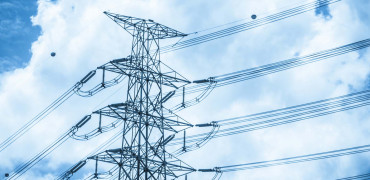James Chaplen explains how heat networks combined with heat pump technology can take low-carbon heating to the next level
The application of heat pumps within heat networks is creating a step-change in these heating systems – leading to greater energy efficiency, the ability to capture and re-use waste heat, and shrinking carbon footprints.
Since their inception in the 1880s, the operating temperatures of heat networks have dropped from 200oC (high-pressure, high-temperature steam) to between 55oC and 70oc flow temperatures and 30oC to 40oC return.
Decreasing operational temperatures over time has increased the energy efficiency of heat networks.
Many of the 14,000 heat networks operating in the UK today have a central energy centre with a gas boiler or CHP.
Heat interface units (HIUs) in each building or apartment generate domestic hot water and low-temperature water for space heating.
Current systems suffer problems with distribution heat losses through pipework
Overheating and distribution losses
In the past ten years or so, we’ve also seen heat pumps applied in energy centres. These can be air-source or water-source, if there is a nearby lake or river. This approach is increasingly attractive as designers look to find low-carbon heating solutions.
However, the operating temperatures across these heat networks remain the same, whatever the heat source.
This has been shown to cause problems with distribution heat losses through pipework, which in turn contributes to overheating in buildings (an important design factor under upcoming Part L and Part F updates).
We've produced a CPD Guide on Heating for multi-residential buildings which is available to download here.
A new generational approach
But now a new generation of heat networks, supported by heat pump technology, take a novel approach, with low temperature water and heat recovery applied across the network.
Designing heat networks around heat pump technology also brings the government’s target of 600,000 annual heat pump installations by 2028 within easier reach.
Rather than using an energy centre that simply pushes out heat, Fifth Generation heat networks (as they are known) circulate low-temperature water around an ambient energy loop.
Temperatures are between 10oC and 30oC. Each building or apartment on the loop has a heat pump which produces domestic hot water and space heating.
The real power of this approach is that the loop can be a heat source or a heat sink.
In mixed use developments heat ejected from cooling systems, for example, can be absorbed back into the loop to provide heating elsewhere on the network.
The loop is therefore a balancing system, with heat pumps ensuring that temperatures are always maintained.
Energy efficiency and carbon savings
The low temperature approach eliminates distribution heat losses and contributions to overheating in buildings.
And the ability to use heat recovery enhances energy efficiency and carbon savings further.
At Mitsubishi Electric, we see Fifth Generation ambient loops as a crucial technology for low carbon heating. That’s why we have added to our wide range of heat pump technology with the new Ecodan Hydrodan.
It’s a water-to-water heat pump specifically designed for ambient loops – built to fit into modern apartments, easy to install and maintain and very quiet in operation.
Don’t just take my word for it
The Climate Change Committee has highlighted heat networks and heat pumps as significant technologies for our decarbonised future.
By using these technologies together, not only do we create more opportunities to meet government targets, but we also reduce our primary energy consumption.
This is a vital point to bear in mind. We are already experiencing the upheaval of our transition away from fossil fuels. The faster and smoother we can make that journey, the more effectively we can address the climate emergency.
By using two very well-established and practical technologies in tandem, we open up new opportunities to achieve net zero.
James Chaplen is Senior Product Manager at Mitsubishi Electric




